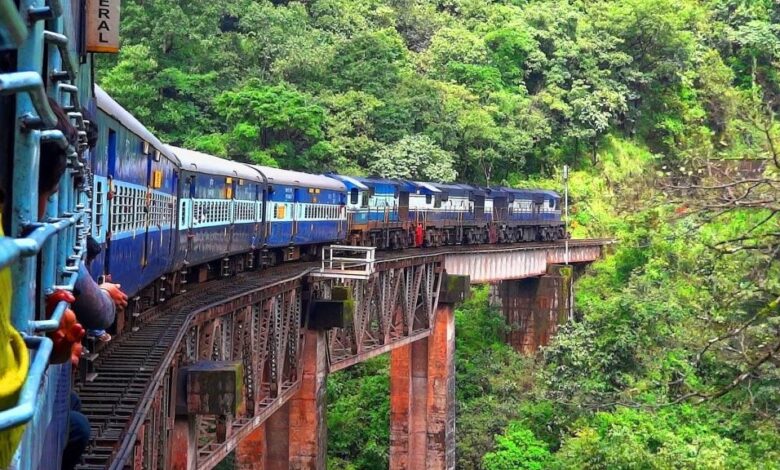Railways in India’s Northeast is realizing its dream to development

Bornali Biswas, Editor in Chief
In 1882, the first locomotive of the Dibru–Sadiya Railway connected distant tea gardens with the Brahmaputra, so that the commodity could eventually reach Kolkata. Over the decades since then, the Railways has reduced travel time from Dibrugarh to Kolkata from 15 days to 24 hours. However, even till 2014, the footprint of the Railways in India’s Northeast remained mostly restricted to current-day Assam. In the last 8 years, much work has been done to ensure that this footprint expands across the northeastern region, and the grit and perseverance in realizing this dream needs to be told.
Rail transport is cheaper than air transport as far as passenger travel is concerned. While several trucks are needed to transport goods, railways can carry huge quantities of goods from one destination to the other and with lesser use of fuel and therefore would reduce transportation costs. The railways cannot charge arbitrary costs. If there is an increase in the traffic or frequency of the railway, then it is immediately followed by a considerable decrease in fare or cost. It is highly economical in terms of use of labour too. It takes only one person each as a driver and guard. This is sufficient to transport more load when compared to any other transport sector.
All the state capitals of the North East will soon be connected or are already connected by railways because of the advantages that this mode of communication affords to the ordinary citizen who cannot afford to take a flight to different destinations. The fact is also that transportation of goods will be that much cheaper and less damaging to the environment than is happening today with trucks lining up all along the Jorabat to Shillong stretch. Governments in the past have shown no spine in implementing what is in the greater good of the people on the fragile plea that the railways will encourage influx. Influx has been the apparition that has stalled the rail project for half a century. A government is elected by the people to govern judiciously and to take decisions that are in the public good. No pressure group can hold a government to ransom if the advantages for the common citizen far outweigh the fear-psychosis. The issue of whether or not the railhead can come as far as Byrnihat and even beyond should not be hijacked by one or other group. The State has many stakeholders, including business persons who need to be consulted and whose views also have to prevail when the Government decides to turn down what is seen as a viable public service.
The proposed Byrnihat-Shillong railway line will have a total of 100 bridges on the route, the longest of which will be 701 metres. There will be 10 stations on the proposed route — Byrnihat, Sohkhwai, Lailad, Umsong, Umar, Nongsder, Kyrdemkulai, Umroi, Umpling and New Shillong
The 110 km long Jiribam to Imphal new line railway project has 52 tunnels and bridges in tough terrains. Among the tunnels, tunnel number 12 is the longest tunnel of this project
Railway lines have been proposed in the state to improve commuting in the northern and Eastern part of the state. The proposed lines are – Bhalukpong-Tenga-Tawang (378 km), North Lakhimpur-Bame-Aalo-Silapathar (247.85 km), and Pasighat-Tezu-Parsuram Kund-Rupai.
The carrying capacity both in terms of passengers and freight, of the railways, is quite large. One even better thing is that the capacity of railways is elastic because the capacity can be increased easily, as per requirement, by adding more carriages or wagons. In Meghalaya the cost of transportation for goods produced in the state works out quite high and adds to the cost of the agricultural and horticultural products that the State produces in plenty. Farmers will be the direct beneficiaries once they are able to transport their goods at a cheaper cost. Alternatively, when the carrying cost for food products such as rice, wheat etc., from outside to the state becomes cheaper it is the common citizen that benefits. Railways therefore are a win-win situation for everyone. So why the resistance?
Please send your suggestion in editor@newsmania.co.in






